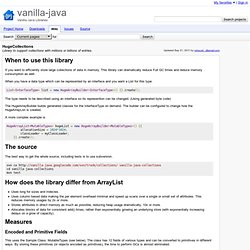

Twitter/finagle @ GitHub. Javatuples - Main. Maven Plugins - GitHub. 10 Things I wish I had known about Apache Wicket. How To Install Oracle Java 7 (JDK) In Ubuntu. As you probably know, Oracle Java (JVM/JDK) will not be available in the Debian / Ubuntu repositories anymore because Oracle retired the "Operating System Distributor License for Java" (JDL) and the only release available in the repositories will be OpenJDK.

But of course, Oracle Java can still be downloaded from its website if you really need it and don't want to use OpenJDK: Linux users who prefer to use the thoroughly tested Oracle JDK 6 or Oracle JDK 7 binaries over OpenJDK builds packaged in their Linux distributions of choice can of course as usual simply get the gratis download at under the same terms as users on other platforms. However, installing it in Ubuntu is not that easy, so here is how to install the latest Sun Oracle Java JDK 7 (at the time I'm writing this post) in Ubuntu.
Install Oracle Java JDK 7 in Ubuntu Warning: JDK 7 is available as a developer preview release, so use it at your own risk. Let's begin! 1. 2. 3. 4. Sudo update-java java -version javac -version - 32bit: Java's security architecture. This month's "Under The Hood" column is the first of a four-part series about Java's security model.

The four articles will focus on the security infrastructure built into the Java virtual machine (JVM) and the java.lang library. This first article gives an overview of the security model and describes the JVM's safety features. Why security? Java's security model is one of the language's key architectural features that makes it an appropriate technology for networked environments. Security is important because networks provide a potential avenue of attack to any computer hooked to them. Java's security model is focused on protecting users from hostile programs downloaded from untrusted sources across a network. Reading or writing to the local diskMaking a network connection to any host, except the host from which the applet cameCreating a new processLoading a new dynamic library and directly calling a native method The sandbox defined The sandbox is pervasive The sandbox is customizable.
HugeCollections - vanilla-java - Library to support collections with millions or billions of entries. - Vanilla Java Libraries. If you want to efficiently store large collections of data in memory.

This library can dramatically reduce Full GC times and reduce memory consumption as well. When you have a data type which can be represented by an interface and you want a List for this type. List<InterfaceType> list = new HugeArrayBuilder<InterfaceType>() {}.create(); The type needs to be described using an interface so its represention can be changed. (Using generated byte code) The HugeArrayBuilder builds generated classes for the InterfaceType on demand.
A more complex example is HugeArrayList<MutableTypes> hugeList = new HugeArrayBuilder<MutableTypes>() {{ allocationSize = 1024*1024; classLoader = myClassLoader; }}.create(); The best way to get the whole source, including tests is to use subversion. svn co vanilla-java-collectionscd vanilla-java-collectionsmvn test Uses long for sizes and indecies.
Encoded and Primitive Fields This uses the Sample Class, MutableTypes (see below). The same data is stored in all cases.